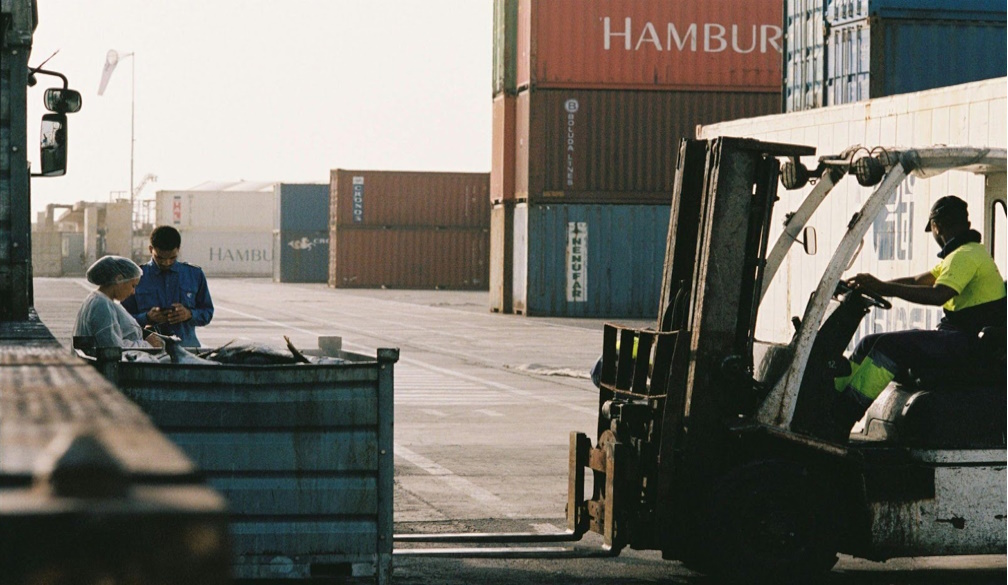Top 6 Challenges in International Shipping Container Logistics and How to Overcome Them

International shipping is the backbone of global trade, enabling businesses to transport products across continents as efficiently as possible. However, shipping container logistics present unique challenges that can disrupt operations, increase costs, and create unnecessary headaches. Whether you're an importer, exporter, or supply chain manager, it's crucial to understand these challenges and how to address them to ensure smooth operations, particularly in international shipping.
Let’s explore some of the biggest challenges in international container logistics and propose practical solutions to help you navigate them successfully.
1. Container Shortages
The Challenge:
One of the biggest challenges in global shipping over the past few years has been the shortage of shipping containers. Disruptions caused by the pandemic and increased demand have created a global imbalance, leaving many containers stranded in unsuitable locations, which leads to delays and higher costs for those needing containers.
How to Overcome It:
- Plan Ahead: The best defence against container shortages is proactive planning. Forecast your shipping needs and book containers well in advance to minimise the risk of delays.
- Be Flexible with Routes and Ports: Consider alternative shipping routes or less congested ports. By avoiding bottlenecks at major ports, you may secure containers more quickly.
- Work with Multiple Shipping Carriers: Relying on a single shipping company limits your options. Expand your network by working with multiple carriers to increase the chances of securing a container when you need one.
Pro Tip: Couriers & Freight Australia allows you to get quotes from multiple carriers in one single platform. - Optimise Container Use: Consolidate smaller shipments or use larger containers to maximise space. Optimising container usage can reduce your overall shipping volume and help mitigate the impact of shortages.
2. Port Congestion and Delays
The Challenge:
Port congestion, driven by the sheer volume of goods crossing borders, is becoming an increasingly significant issue. The world’s busiest ports are experiencing delays due to large shipping backlogs. Congestion can severely impact delivery schedules and lead to demurrage fees or additional charges for containers remaining at the port longer than agreed.
How to Overcome It:
- Stay Informed: Use live tracking tools to monitor port congestion. Being aware of potential delays allows you to adjust your plans or reroute shipments to less congested ports.
- Ship During Off-Peak Times: Shipping during peak seasons or holidays increases the risk of port congestion. If possible, ship during off-peak times to avoid significant delays.
- Choose Efficient Ports: Some ports are better equipped to handle high volumes of traffic. Use ports with advanced technology and infrastructure to speed up loading and unloading, reducing the risk of delays.
- Consider Alternate Ports: Major ports are not your only option. Many secondary ports are less crowded and can efficiently handle your shipment, depending on proximity to your destination.
3. Rising Shipping Costs
The Challenge:
Shipping costs fluctuate widely due to factors such as fuel prices, container shortages, and surcharges imposed by shipping companies. These surprise expenses can significantly impact businesses that depend on international shipping.
How to Overcome It:
- Negotiate Long-Term Contracts: If you ship regularly, negotiate long-term agreements with shipping carriers. This can help you secure more stable prices and reduce the impact of sudden rate increases.
- Optimise Packaging: Reducing the size and weight of your shipments can save money. Optimise your packaging to use space more efficiently within containers, which can lower shipping costs.
- Leverage Digital Freight Platforms: Modern technology allows you to compare rates instantly across multiple carriers. Use digital freight platforms to find the best competitive prices for your shipments.
- Consolidate Shipments: If you frequently ship smaller quantities, consolidate them into larger shipments to benefit from economies of scale and reduce freight costs.
4. Customs Clearance Issues
The Challenge:
Navigating international customs is complex, with each country having its own regulations. A small mistake in paperwork or miscommunication can lead to delays, fines, or even lost goods. Understanding customs requirements is crucial for smooth shipping.
How to Overcome It:
- Work with Experienced Customs Brokers: Partner with seasoned customs brokers who are familiar with the policies of the countries you’re shipping to. They can help you avoid costly mistakes and ensure your paperwork is correctly prepared.
- Double-Check Shipping Documents: Ensure there are no errors in your shipping documents, including invoices, certificates of origin, and bills of lading. Incorrect documentation is one of the main reasons for customs delays.
- Stay Updated on Rules: Customs regulations can change frequently, particularly in the wake of new trade agreements or tariffs. Stay informed of any changes in the countries you’re shipping to in order to avoid potential problems.
5. Damaged Goods During Transit
The Challenge:
Shipping containers travel long distances, often through rough weather or handling, which increases the risk of goods being damaged and resulting in significant losses.
How to Overcome It:
- Use High-Quality Packaging: Ensure your goods are protected with strong, durable packaging materials that can withstand the rigours of international shipping. Use cushioning materials such as foam, bubble wrap, or airbags for fragile items.
- Secure the Load: Make sure your cargo is properly secured inside the container to minimise movement during transport, which helps prevent damage.
- Get Insurance: While insurance adds to the cost, it provides peace of mind. Insuring your shipments against loss or damage can save you significant hassle and money in the long term.
- Track and Monitor Conditions: Some companies use tracking devices that monitor conditions inside the container, such as temperature and humidity. This is particularly useful if you’re shipping perishable goods that require specific conditions.
6. Environmental Concerns
The Challenge:
Sustainability is increasingly important in the shipping industry. Shipping containers contribute to carbon emissions, and many businesses are looking for ways to reduce their environmental footprint.
How to Overcome It:
- Choose Environmentally Friendly Shipping Methods: Some carriers are more environmentally friendly than others. For example, slow-steaming routes use less fuel, and ships with low emissions are becoming more common.
- Consolidate Shipments: Reduce the number of shipments by consolidating them into fewer containers, thereby cutting down on trips and emissions.
- Use Eco-Friendly Materials: Opt for recyclable or biodegradable packaging materials to minimise waste.
- Support Green Initiatives: Choose carriers that are investing in green technologies, such as energy-efficient ships or alternative fuels. By supporting eco-conscious companies, you encourage the industry to become greener and more sustainable.
Conclusion
Managing logistics for international shipping containers can be challenging, but with thoughtful planning, you can mitigate many of the issues that arise. Whether it's dealing with container shortages, rising costs, customs clearance issues, or other complexities, businesses need to stay proactive to navigate these challenges effectively.
By planning ahead, staying informed, and collaborating with reliable partners, companies can make international shipping operations more efficient, cost-effective, and sustainable.







